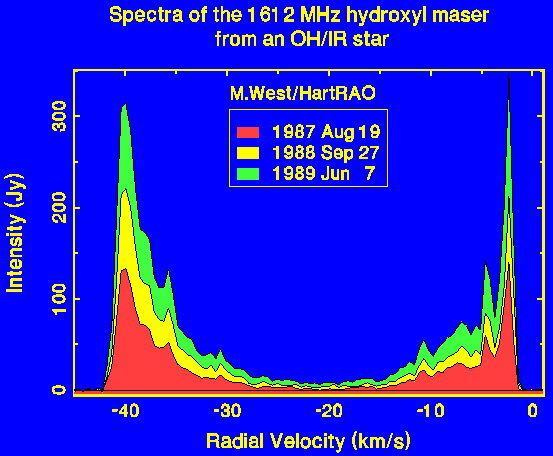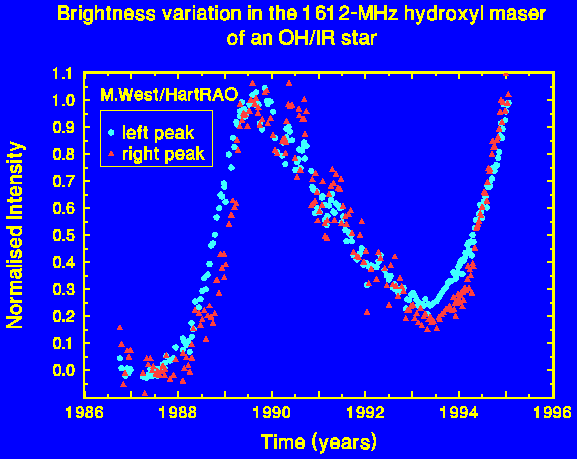In Mira-type stars the outer atmosphere of the
stars blows away as a strong wind and can be thrown off at the peaks of the
pulsations. The gas condenses rapidly as it blows away from the star,
forming molecules such as water and silicon monoxide. The SiO molecules
combine to create grains of dust. The water molecules can be split by
ultraviolet light from other stars to form hydroxyl
molecules. The heat from the warm dust excites the hydroxyl. The excited
hydroxyl molecules give rise to maser action in the lines
at 1667 and 1612 MHz. Miras with short pulsation periods (about one year)
and low mass loss rates produce weak masers in the 1667 MHz line.
However, in Miras with a high mass loss rate and long pulsation periods
(up to six years), the 1612 MHz hydroxyl masers becomes much stronger than
the 1667 masers. They produce a characteristic U-shaped
emission line shape from the shell of gas expanding away from the star.
These stars are known as OH/IR stars for their strong
hydroxyl (OH) masers and strong infrared (IR) emission from the shell of
warm gas. A number of these masers were discovered with the 26m Hartebeesthoek
telescope, including the one shown below.

The intensity of the maser follows the changing brightness of the
star as it pulsates. This is shown in the image above.
The difference in the velocities of the two peaks is equal to twice the
velocity with which the shell of gas and dust given off by the star is
expanding. In this case the expansion velocity is about 21
km/s.
The changing brightness of the left and right maser
peaks seen in the spectra above over a ten year period are
shown below.

The left peak rises before the right peak and also falls before the right
peak. This is a result of the extra time it take the radio waves to cross
from the far side of the shell of masers to the near side. In this case the
time difference is more than a month. As radio waves travel
at the speed of light (300000 km/s), this means that the hydroxyl masers
around this star occur in a shell with a diameter about 100
times that of the solar system (taken as Pluto's orbit).
